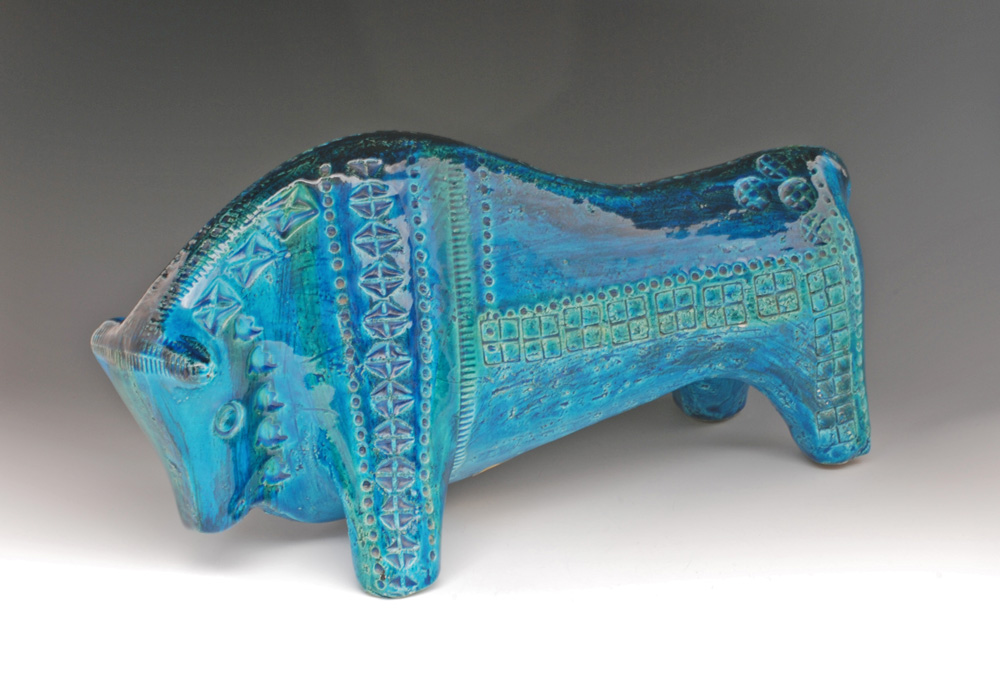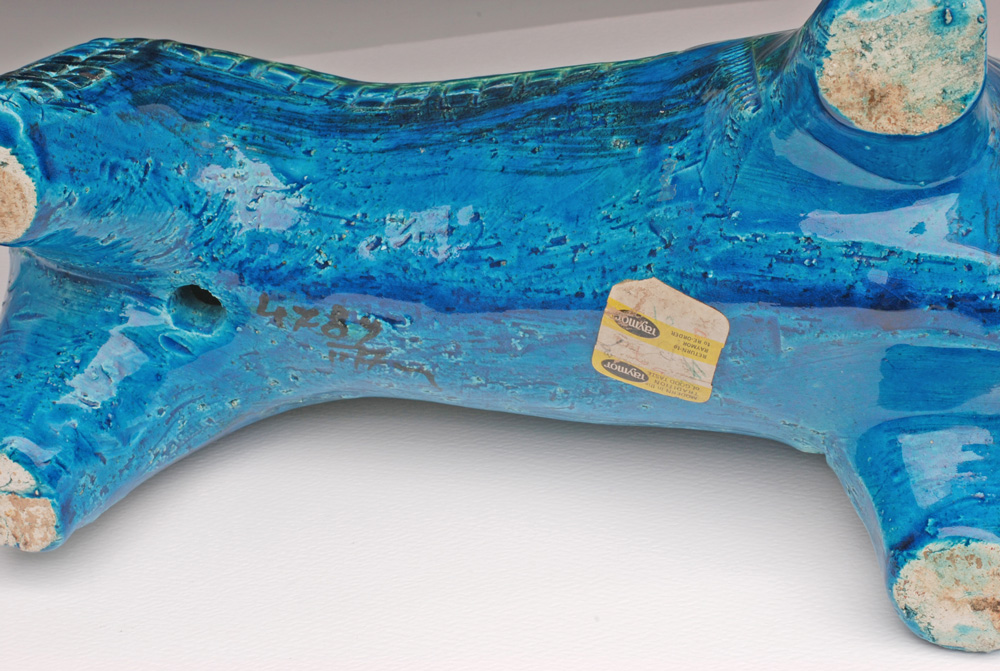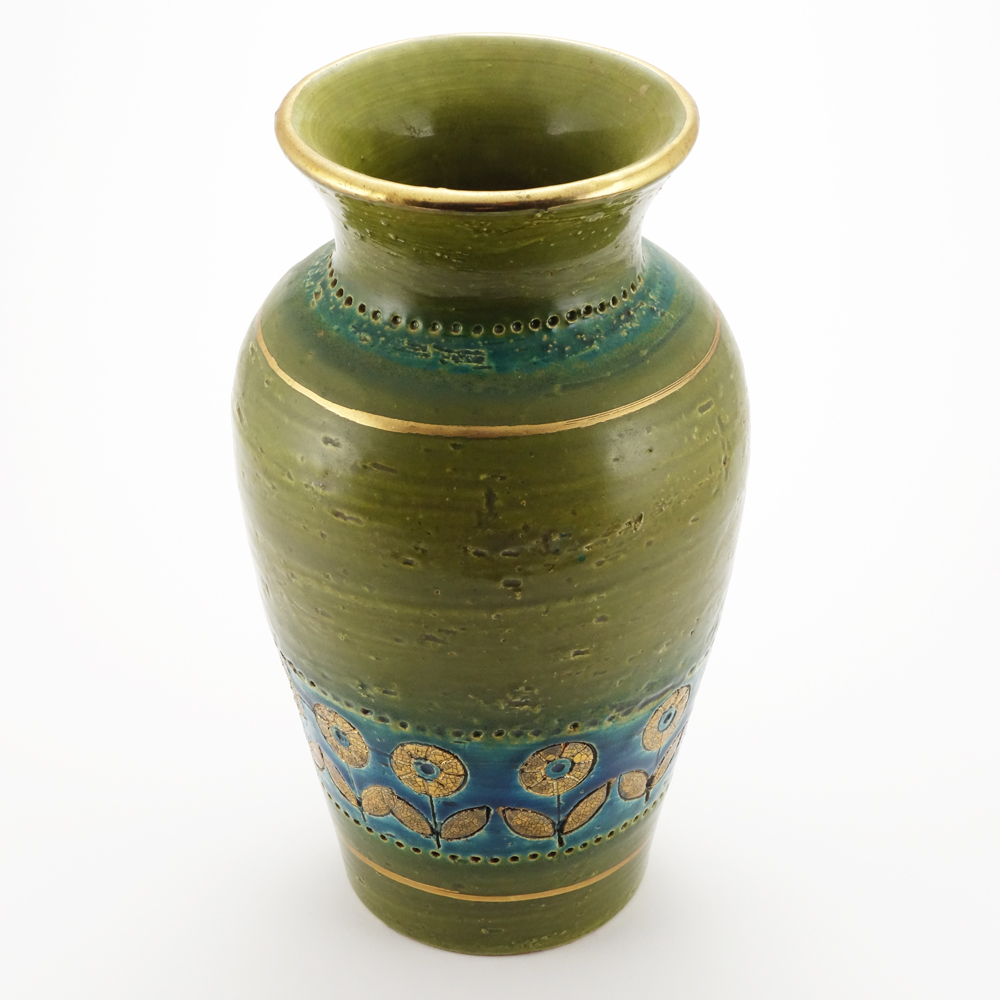
Bitossi ceramics are not always particularly well marked, encouraging many to add this name to any ceramic ware marked “Italy.” Vintage Bitossi pieces are usually marked with a handwritten “Italy” and a style number, often (but not always) including a capital “B”. Becoming familiar with the glazes, distinctive texture and design impressions of Bitossi is the best way to judge. Starting in the 70s, some of their work was embossed with a name stamp.
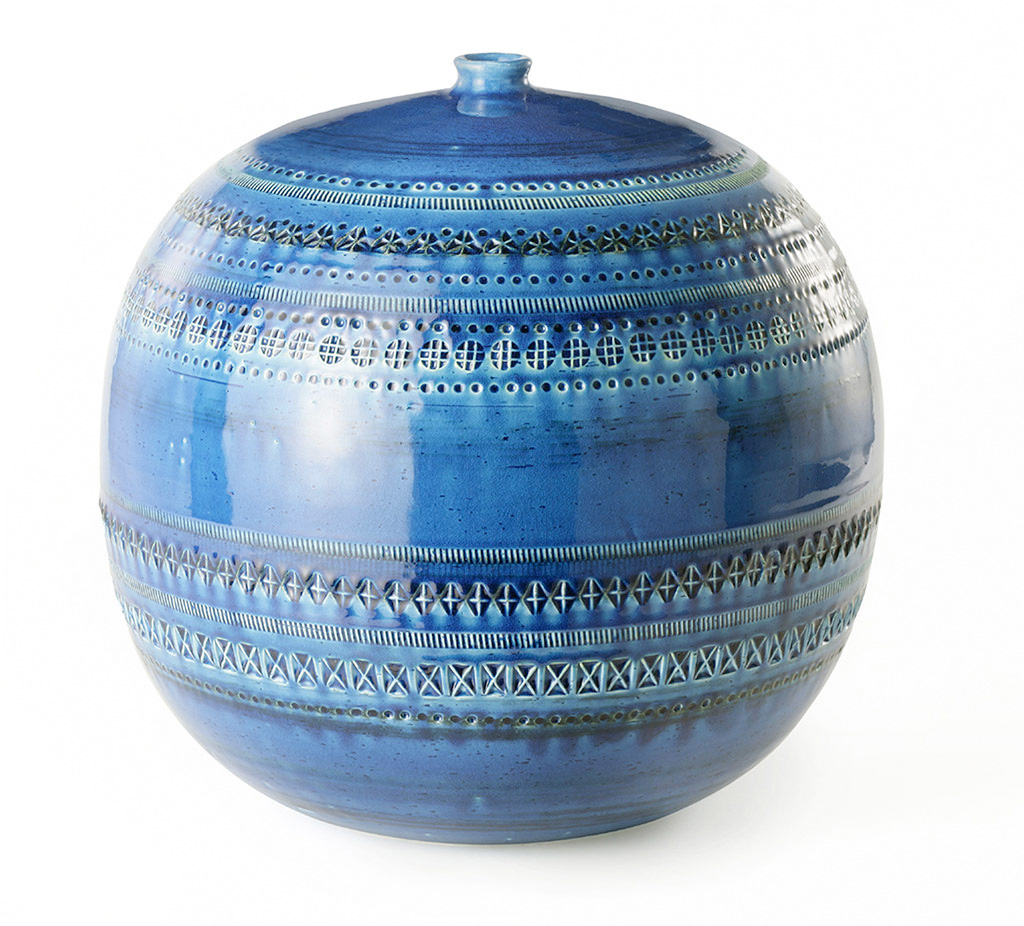
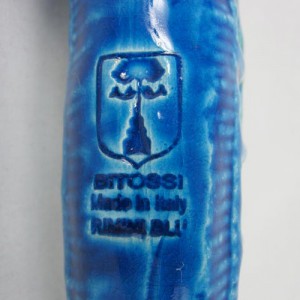
Although known for Rimini blue, Bitossi pieces also come in red, gold, orange, brown, green, yellow and others. For the best discussion of Bitossi markings, please see the excellent article on the
Italian Pottery Marks forum here. And another great discussion on The Vintage Post here.
The Bitossi family’s connection with ceramics dates back to the 1870s. But the true beginning of the modern pottery was in 1921, when Guido Bitossi founded Manifattura Cavaliere Bitossi e Figlia in Montelupo Fiorentino, near Florence. After Aldo Londi was promoted to artistic director in 1946, Bitossi’s ceramic designs took on his wonderfully whimsical, imaginative and modern style. His designs were a truly an inspired combination of functionality and aesthetics. Londi also encouraged other talented designers to create for Bitossi, such as Ettore Sottsass and Piero Fornasetti. The Bitossi company is still in business today.
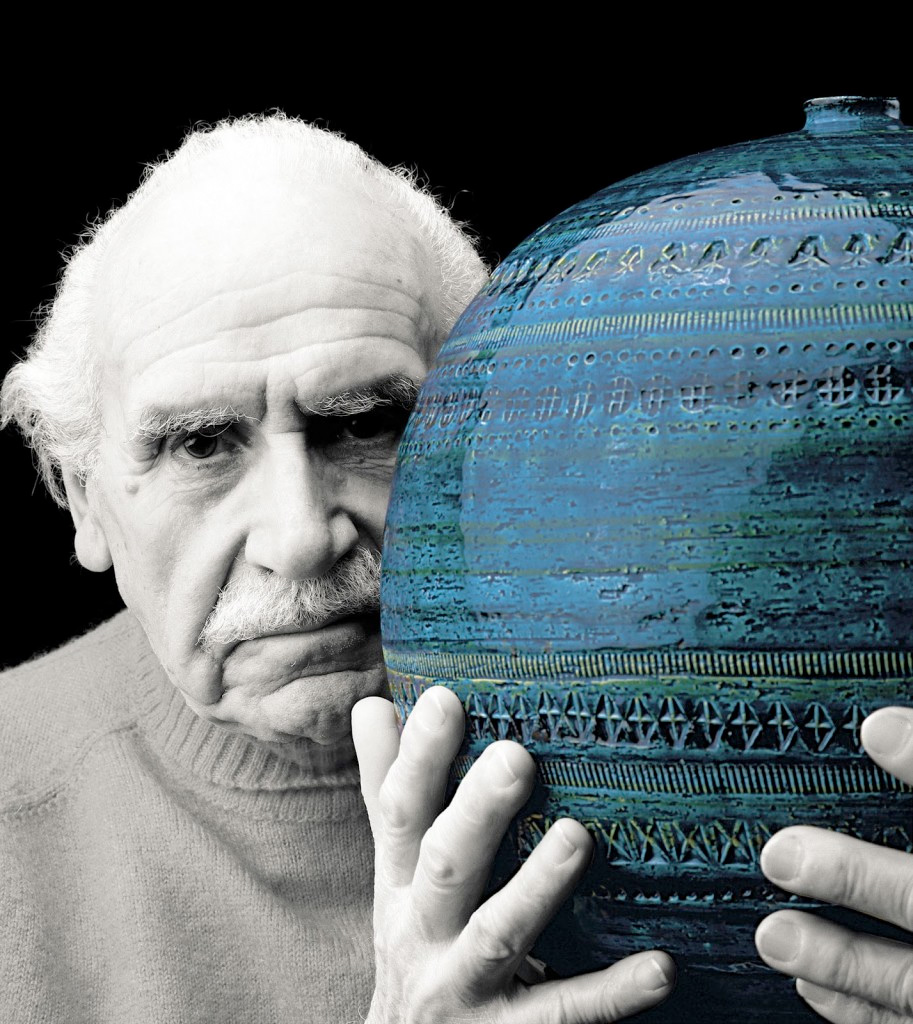
Many Bitossi pieces were imported by Rosenthal-Netter in the 1960s. Rosenthal-Netter was created in 1959 by Alvin L. Rosenthal and Henry H. Netter. Located at 225 5th Avenue in Manhattan, the firm became a major importer and a strong rival of the Raymor company in importing high style ceramics from Europe. Rosenthal-Netter not only imported production ware, but was known to commission original designs for their customers. The company formally dissolved in 1995.
